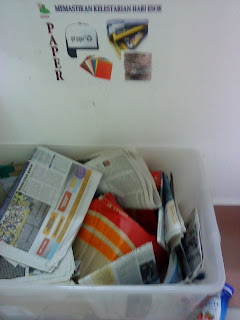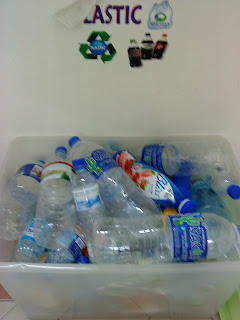Here is a list of items
that most curbside recycling centers will not take:
1. Styrofoam and
Packaging Supplies - It is best to reuse or donate these items.
2. Gift Wrapping
Paper - This type of paper is of such poor quality that it is not
accepted by recycling centers. Most paper that is coated in wax, aluminum, or
plastic is not accepted because the recycling process is too expensive to be
profitable.
3. Pizza Boxes
and Take-Out Food Boxes - Whether it is cardboard, Styrofoam or
plastic, these items are not accepted by recycling centers because the food can
contaminate the recyclable materials. Also, wet or greasy cardboard can jam
recycling machines so it is best to let the cardboard dry out before recycling
and to protect it from rainfall while waiting for curbside pick-up (Source:
RiverWired).
4. Plastic
Credit Cards - Fake or real, these cannot be recycled due to the type
of plastic the card is made out of.
5. Plastic
Hangers - Not enough plastic hangers are being recycled for it to be
profitable. It is best to reuse or donate any unwanted hangers (Source: Real
Simple).
6. Mirrors -
The chemicals in this type of glass cannot be mixed with glass bottles and
jars. It is best to donate unused mirrors to your local thrift shop.
7. Mustard-Colored
Envelopes - The dye in these envelopes is too difficult to remove for
it to be recycled. This is an item that I had recycled for many months until I
was notified at work that these envelopes are not accepted. Don't worry if you
have recycled these though, the recycling centers can filter these of their
system.
8. Shower
Curtains and Liners - Most shower curtains and liners are made of PVC
which is not accepted by recycling centers because when it is melted down it
can contaminate the chemical makeup of the recycled material (Source: Real
Simple).
9. Deodorant
Sticks - The plastic dial on the bottom of the stick is not recyclable
therefore recycling centers will not accept these items (Source: Real Simple).
10. Plastic Lids -
These items are made of a different plastic than the rest of the bottle so they
can not be recycled. Make sure to remove all lids from soda bottles, juice
containers, milk cartons, and other food products and toss them.
11. Wipes and
Sponges - Any type of cleaning cloth cannot be recycled because of the
cleaning chemicals in the cloth.
12. Batteries
and Car Parts - Even though your curbside recycling center might not
accept these items; many other places will properly recycle or discard of them.
13. Broken Glass -
There are obvious dangers for workers handling broken glass so it is not accepted.
14. Mobile Phones - Curbside recycling won't accept cell
phones, but you always have the option of mailing the phone back to your cell
phone company with the prepaid envelops the offer when you purchase a new
phone.
15. Ink
Cartridges - It is best to have these refilled; it not
only saves the earth but saves you money.

















